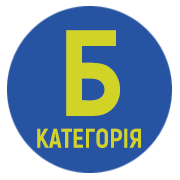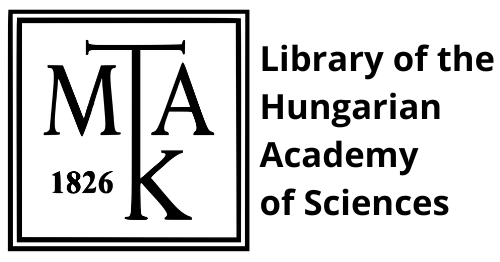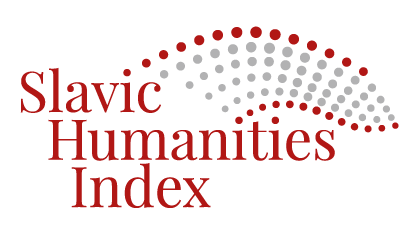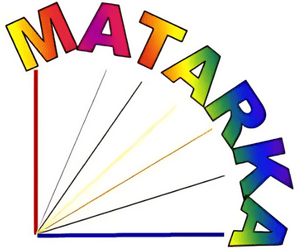Оцінювання рівня багатомовності школярів Угорщини в початковій школі
DOI:
https://doi.org/10.58423/2786-6726/2024-1-101-12Ключові слова:
багатомовність, володіння іноземними мовами, англійська мова, німецька моваАнотація
В європейському просторі багатомовні підходи до викладання та навчання асоціюються зі значними перевагами на лінгвістичному та металінгвістичному рівнях. Дослідження ґрунтується на основі динамічної моделі багатомовності. В угорському контексті тема багатомовності є малодослідженою сферою, проте останнім часом з’явилося кілька досліджень, у яких розглянуто питання засвоєння третьої мови та усвідомлення металінгвістики. У дослідженні взяли участь 44 учасники, з яких 22 учні (з них 11 учнів 7-го класу, 11 – 8-го класу) вивчають англійську як другу іноземну мову. Решта 22 учні (з них 11 учнів 7-го класу, 11 – 8-го класу) вивчають німецьку як другу іноземну мову. Маємо на меті розкрити фактори, що впливають на вивчення третьої іноземної мови. Спробуємо дати відповіді на такі запитання: (1) Чи впливають попередні знання з мови та вік на рівень володіння другою іноземною мовою? (2) Чи впливає рівень володіння мовою на рівень багатомовної свідомості? (3) Чи впливає порядок вивчення мов на рівень володіння другою іноземною мовою та на рівень багатомовної свідомості учнів? Дані зібрано за допомогою самостійно розроблених С- тестів та тесту з багатомовної компетентності. Результати тестів показали, що рівень знань в учнів, які вже попередньо володіли іноземною мовою, був вищим, однак лише в групах з англійською мовою навчання. Вік учнів відіграв вирішальну роль у формуванні рівня володіння мовою на професійному рівні в обох групах, хоча між групами була різниця в один рік. Результати свідчать про те, що вищий рівень володіння мовою може сприяти вищому рівню міжмовної обізнаності, але не вищому рівню металінгвістичної обізнаності в кожній групі. Вивчення німецької мови може привести до вищого рівня володіння мовою та багатомовної обізнаності.
Посилання
Aronin, L. &Jessner U. (2015) Understanding current multilingualism: What can the butterfly tell us? In The Multilingual Challenge: Cross-disciplinary Perspectives (271- 291). Ed. Ulrike Jessner und Claire Kramsch. Berlin, New York: Mouton de Gruyter
Bacsa, É. (2012). “AzIdegennyelv-Tanulással Kapcsolatos Középiskolás Tanulók Körében,” 167–93.
Babaii, E. &Fatahi-Majd, M. (2014). Failed Restoration in the C-test: Types, sources, and implications for C-test processing. In book: Der C-Test: AktuelleTendenzen/The C- Test: Current trends.Publisher: Peter Lang.Editors: R. Grotjahn
Baker, C. and Wright (2017). Foundations of Bilingual Education and Bilingualism. Bristol: Blue Ridge Summit: Multilingual Matters.
Baghaei, P. &Grotjahn, R.. (2014). The validity of C-Tests as measures of academic and everyday language proficiency: A multidimensional item response modelling study. In book: Der C-Test: AktuelleTendenzen/The C-Test: Current trends. Chapter: The Validity of C-Tests as measures of academic and everyday language proficiency: A multidimensional item response modelling study. Publisher: Peter LangEditors: RuedigerGrotjahn
Bardel, C. (2020). Third language acquisition: Age, proficiency and multilingualism. In Linguistic Approaches to Bilingualism (Vol. 3, Issue 1).
Bardel, C., & Falk, Y. (2007). The Role of the Second Language in Third Language Acquisition: The Case of Germanic Syntax. Second Language Research, 23, 459- 484. http://dx.doi.org/10.1177/0267658307080557
Berkes, E., & Flynn, S. (2012). Enhanced L3…Ln Acquisition and its Implications for Language Teaching.
Boócz-Barna K. (2007). Formen des Sprachwechsels im Unterricht des Deutschen als L2 und L3, ELTE Germanisztikai Intézet.
Cenoz, J.&Gorter, D. (2020). Teaching English through pedagogical translanguaging.
World Englishes. 2020; 39: 300– 311. https://doi.org/10.1111/weng.12462
Cenoz, J., Hufeisen, B., &Jessner, U. (Eds.). (2001). Bilingual education and bilingualism: Vol. 31. Cross-linguistic influence in third language acquisition: Psycholinguistic perspectives. Clevedon, UK, Buffalo: Multilingual Matters.
Cenoz, J. (2003). The additive effect of bilingualism on third language acquisition: A review. International Journal of Bilingualism, 7(1), 71–87. https://doi.org/- 10.1177/13670069030070010501
Cenoz, J. &Jessner, U. (eds.) (2000). English in Europe. The Acquisition of a Third Language. Clevedon – Buf- falo – Toronto – Sydney: Multilingual Matters
Cenoz, J. (2013). The influence of bilingualism on third language acquisition: Focus on multilingualism. Lan- guage Teaching, Volume 46, Issue 1, pp. 71–86.
Cenoz, J., Hufeisen, B. &Jessner, U. (eds.) (2003). The Multilingual Lexicon. Dordrecht: Kluwer Academic Publishers
Cenoz, J.(2009). Towards Multilingual Education: Basque Educational Research from an International Perspective, Bristol, Blue Ridge Summit: Multilingual Matters. https://doi.org/10.21832/9781847691941
Cohen, L., Manion, L. and Morrison, K. (2000) Research Methods in Education. 5th Edition, Routledge Falmer, London. http://dx.doi.org/10.4324/9780203224342
Cook, V.(2016): Premises of Multicompetence. Draft of background chapter for Cook,
V. & Li Wei (eds.) The Cambridge Handbook of Linguistics Multi-Competence (2016). http://www.viviancook.uk/Writings/Papers/MC16Premises.html
Cronbach, L.J. and Meehl, P.E. (1955). Construct validity in psychological tests.
Psychological Bulletin 52, 281-302.
Crocker, L., &Algina, J. (1986). Introduction to classical and modern test theory. Belmont, CA: Wadsworth Group/Thomson Learning
Cromdal, J. 1999. Childhood bilingualism and metalinguistic skills: analysis and control in young Swedish-English bilinguals. Applied Psycholinguistics 20: 1–20.
Cummins, J. (2008). Teaching for Transfer: Challenging the Two Solitudes Assumption in Bilingual Education. In: Hornberger, N.H. (eds) Encyclopedia of Language and Education. Springer, Boston, MA. https://doi.org/10.1007/978-0-387-30424-3_116
Csizér, K., & Öveges, E. (2018). Vizsgálat A KöznevelésbenFolyóidegennyelv- OktatásKereteirőlÉsHatékonyságáról. Kutatási Jelentés.
De Angelis, G. (2007). Third or additional language acquisition. Second language acquisition: Vol. 24. Clevedon, Buffalo: Multilingual Matters.
Dornyei, Z. (2007). Research methods in applied linguistics. New York: Oxford University Press.
Dörnyei, Z., &Katona, L. (1992). Validation of the C-test amongst Hungarian EFL learners. Language Testing, 9(2), 187–206. https://doi.org/10.1177/026553229200900206
Drackert, A., &Timukova, A. (2020). What does the analysis of C-test gaps tell us about the construct of a C-test? A comparison of foreign and heritage language learners’ performance. Language Testing, 37(1), 107–132. https://doi.org/- 10.1177/0265532219861042
Eckes, T., &Grotjahn, R. (2006). A closer look at the construct validity of C-tests. Language Testing, 23(3), 290–325. https://doi.org/10.1191/0265532206lt330oa
Fouser, R. J. (1995). Problems and Prospects in Third Language Acquisition Research. 31(2), 387–414.
Grosjean, F. (2010). Bilingual: Life and reality. Harvard University Press. https://doi.org/10.4159/9780674056459
Hammarberg, B. (2018). L3, the tertiary language. 127–150. https://doi.org/- 10.1075/hsld.7.06ham
Heltai, P. (2013). Cross-Linguistic Influences in the Acquisition of Nominal Compounds. SKASE Journal of Theoretical Linguistics, 10(3), 19–46.
Herdina, P. & U. Jessner (2002). A dynamic model of multilingualism: Perspectives of change in psycholinguistics. Clevedon: Multilingual Matters.
Hofer, Barbara. (2015). On the Dynamics of Early Multilingualism: A Psycholinguistic Study. 10.1515/9781614518679.
Hofer, B. (2017) Emergent multicompetence at the primary level: a dynamic conception of multicompetence, Language Awareness, 26:2, 96-112, DOI: 10.1080/09658416.2017.1351981
Hofer, B. & Jessner, U. (2019a): Mehr-Sprachig-Kompetent, MSK 9-12, Mehrsprachige Kompetenzen fördern und evaluieren. Studia Verlag, Innsbruck.
Hofer, B.&Jessner,U.(2019b). Assessing components of multi-(lingual) competence in young learners, Lingua, Volume 232,2019,102747, ISSN 0024 3841,https://- doi.org/10.1016/j.lingua.2019.102747.
Hofer, B.(2023) A Multilingual Development Framework for Young Learners: Early Multi-Competence in South Tyrol, Berlin, Boston: De Gruyter Mouton, https://doi.org/10.1515/9783111106601
Horvath, L. &Jessner U. (2020). Becoming multilingual in Hungary. In Batyi, S. (ed.) Kétnyelvűség: magyar és nem magyar kontextus. Tanulmányok Navracsics Judit köszöntésére. Bilingualism: Hungarian and Non-Hungarian Context. Studies in Honor of Judit Navracsics (pp. 143-160).Veszprém: Pannon Egyetem (University of Pannonia).
Horvath, L. ;,&Jessner, U. (2023). Multilingual awareness-raising as a pedagogicaltool in theinitialstage of L3 teachingForeignlanguageeducation in Hungary : language policy vs .reality. Alkalmazott Nyelvtudomány, XXIII.(1), 73–96.
Jessner,U. (1999). Metalinguistic Awareness in Multilinguals: Cognitive Aspects of Third Language Learning, Language Awareness, 8:3-4, 201-209, DOI: 10.1080/09658419908667129
Jessner, U. (2003). A dynamic approach to language attrition in multilingual systems. 10.21832/9781853596346-014
Jessner, U. (2006). Linguistic Awareness in Multilingual Learners. English as a Third Language. Edinburgh: Edinburgh University Press.
Jessner, U. (2008 a). Teaching third languages: Findings, trends and challenges.
Language Teaching, 41(1), 15–56. https://doi.org/10.1017/S0261444807004739
Jessner, U. (2008 b) A DST model of multilingualism and the role of metalinguistic awareness. The Modern Language Journal, 92, 270-283.
Jessner, U., Allgäuer-Hackl, E., & Hofer, B. (2016). Emerging Multilingual Awareness in Educational Contexts: From Theory to Practice. Canadian Modern Language Review, 72(2), 157–182. https://doi.org/10.3138/cmlr.274600
Jessner, U. and V. Török 2016. Strategies in multilingual learning: opening new research avenues. In Implications for the Future: Perspectives from Applied Linguistics Today, ed. J. Navrascics and S. Pfenninger. Bristol: Multilingual Matters.
Katona, L., &Dörnyei, Z. (1991). Az idegen nyelvtudás mérésének új módja - a C-teszt. Iskolakultúra, 1(4), 42–51. https://ojs.bibl.u-szeged.hu/index.php/iskolakultura/- article/view/28320
Kecskés, I., & Papp, T. (2000). Foreign language and mother tongue. Mahwah, N.J., London: Erlbaum.
Kecskés, I. (2008). The effect of the second language on the first language. (2), 30–34. Retrieved from https://www.researchgate.net/publication/291082110_The_effect_- of_the_second_language_on_the_first_language/citation/download
Kecskes, I. (2015). The state of L1 knowledge in foreign language learners., 49(3), 321–340. https://doi.org/10.1080/00437956.1998.11432476
Klein-Braley, C. and Raatz, U. (1982). Der C.- Test: Ein neuer Ansatz zur Messung von allgemeiner Sprachbeherrschung. AKS Rundbrief 4, 23—37.00108
Khoshdel, Fahimeh. (2017). The C-Test: A Valid Measure to Test Second Language Proficiency? DOI: 10.31219/osf.io/c7sy5
Kramsch, C.& Whiteside, A. (2007). Three Fundamental Concepts in Second Language Acquisition and Their Relevance in Multilingual Contexts. The Modern Language Journal, 91: 907-922. https://doi.org/10.1111/j.1540-4781.2007.00677
Magyar Közlöny (2020).National Core Curriculum. https://magyarkozlony.- hu/dokumentumok/3288b6548a740b9c8daf918a399a0bed1985db0f/megtekintes
Medgyes, P. &Nikolov, A.M. (2014). Research in foreign language education in Hungary (2006–2012). Language Teaching, 504–537.
Montanari, Simona. "14. Facilitated Language Learning in Multilinguals". Multidisciplinary Perspectives on Multilingualism: The Fundamentals, edited by Simona Montanari and Suzanne Quay, Berlin, Boston: De Gruyter Mouton, 2019, pp. 299-324. https://doi.org/10.1515/9781501507984-014
Ministry of Education (2002-3). Language Education Policy Profile: Hungary. https://rm.coe.int/language-education-policy-profile-hungary/16807b3c2d
Ministry of Education and Culture. Education in Hungary. Past, Present and Future. - an overview. (2008) https://unesdoc.unesco.org/ark:/48223/pf0000188804
McCowan, R. J. R., McCowan, S. S. C., Center for Development of, H. S., & State University of, N. Y. (1999). Item Analysis for Criterion-Referenced Tests. Online Submission, 39. http://eric.ed.gov/ERICWebPortal/recordDetail?accno=ED50171
Munoz, C.(2020): Cognate recognition by young multilingual language learners: The role of age and exposure. In: Sanchez and Bardel: Third language acquisition: Age, proficiency and multilingualism. (EuroSLA Studies 3). Berlin: Language Science Press.
Nagy, K. (2009). English language teaching in Hungarian primary schools with special reference to the teacher’s mother tongue use (Doctoral Thesis). University of Sterling, United Kingdom.
Navracsics, J. (2009). The emergence of the L3 lexicon – the onset. In Lengyel, Zs. & Navracsics, J., eds., Studies on the Mental Lexicon: Language Acquisition – Speech Production – Speech Perception. Budapest: TintaKiadó, pp. 119–34.
Nshiwi, D. &Jessner, U. (2021). The Effect of Metalinguistic Awareness and the Previously Learned Foreign Languages on Fourth Language Acquisition by Adult Learners. XXI. 1-17. 10.18460/ANY.2021.1.001.
OFI. 2012. “Kerettantervek.” Hungary. https://www.oktatas.hu/kozneveles/- kerettantervek/2012_nat
Penner, O. (2007): Nyelvi interakciók megjelenése egy idegennyelvitanítási gyakorlaton. ModernNyelvoktatás.
Petneki, K.(2009).Teaching Foreign Languages. Magyar nyelvű Kutatási jelentés (közzétett) (Egyéb) Tudományos, Megjelent: 2009 https://ofi.oh.gov.hu/teaching- and-learning-090617 retrieved 05.02.2023
Plonsky, L. & Oswald, F. (2014). How Big Is "Big"? Interpreting Effect Sizes in L2 Research. Language Learning.64. 878-912. 10.1111/lang.12079.
Ricciardelli, L.A. 1992. Bilingualism and cognitive development in relationtothresholdtheory. Journal of PsycholinguisticResearch 21, no. 4: 301–16.
Saeedi, M. &Tavakoli, M. &Kazerooni, S.R. &Parvareshs, V. (2011). Do C-test and Cloze procedure measure what they purport to be measuring? A case of criterion-related validity. World Academy of Science, Engineering and Technology. 74. 1043-1052.
Safont Jordà, M.P. (2015). Third Language Acquisition in Multilingual Contexts. In: Cenoz, J., Gorter, D., May, S. (eds) Language Awareness and Multilingualism. Encyclopedia of Language and Education. Springer, Cham. https://doi.org/- 10.1007/978-3-319-02325-0_10-1.
Sánchez, Laura. (2014). L2 activation and blending in third language acquisition: Evidence of crosslinguistic influence from the L2 in a longitudinal study on the acquisition of L3 English. Bilingualism: Language and Cognition. 18. 1-18. DOI: 10.1017/S1366728914000091.
Sigott, G. (2004). Towards Identifying the C-Test Construct. Publisher: Peter Lang International Publishers Frankfurt/Main Germany. ISBN: 3-631-52062-X
Singleton, D. & Ryan, L. (2004). Language Acquisition: The Age Factor. 10.21832/9781853597596.
Szabó, I. (2008). Foreign language teaching in Primary Education in Hungary. Encuentro. (17), 23–27. Retrieved from https://core.ac.uk/download/pdf/58908925.pdf
Szabó, N. &Failasofah, F. (2022). English and German teachers’ language awareness in the Hungarian school context. 15(1).
T. Balla, Á. (2012). The role of second language English in the process of learning third language German. 212.
Tremblay, Marie-Claude. (2006). Cross-Linguistic Influence in Third Language Acquisition: The Role of L2 Proficiency and L2 Exposure. CLO/OPL. 34.
Vetter, E. &Jessner, U. (2016). Multilingual Education Volume 35 Series Editors. Retrieved from http://www.springer.com/series/8836
Downloads
Опубліковано
Як цитувати
Номер
Розділ
Ліцензія
Автори зберігають авторські права та надають журналу право першої публікації. Водночас робота ліцензується за умовами ліцензії Creative Commons Attribution 4.0 International License (CC BY 4.0), що дозволяє іншим поширювати матеріал за умови належного посилання на автор(ів) та первинну публікацію в цьому журналі.

















